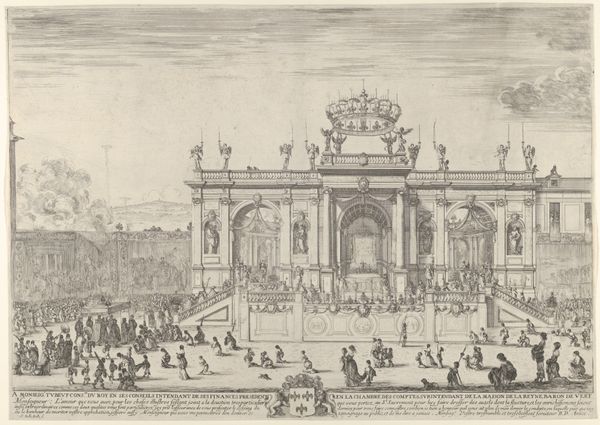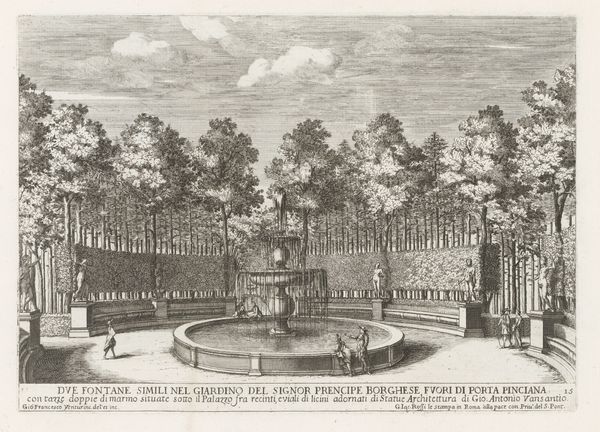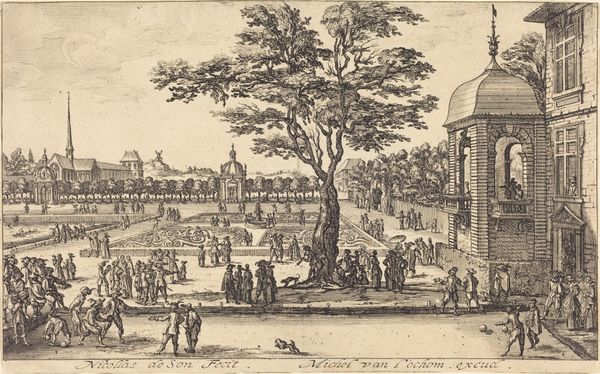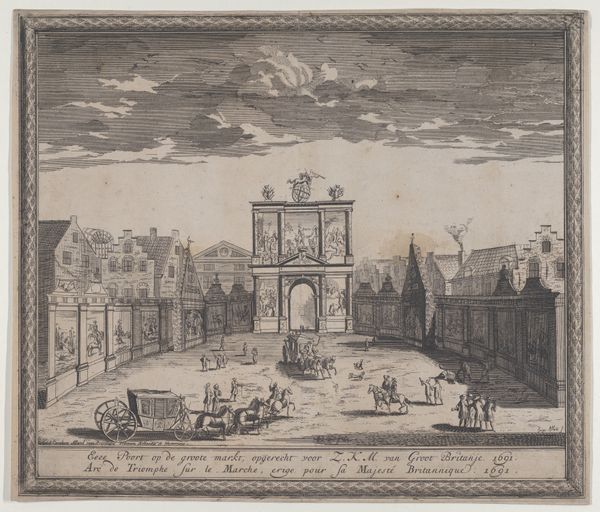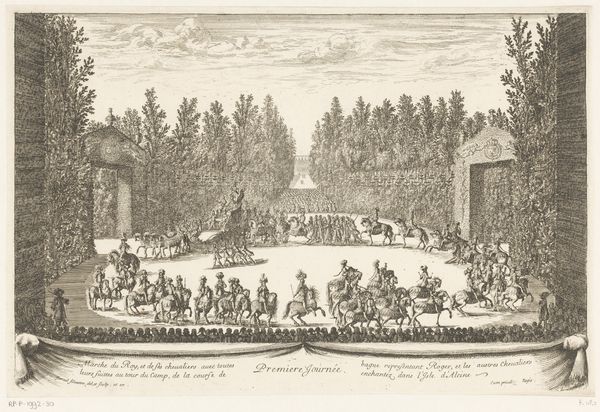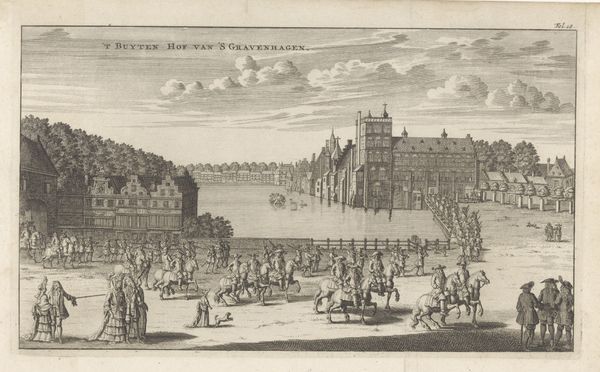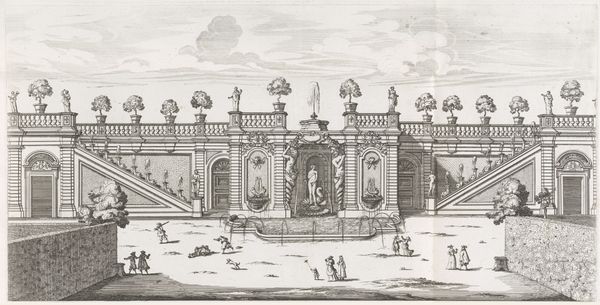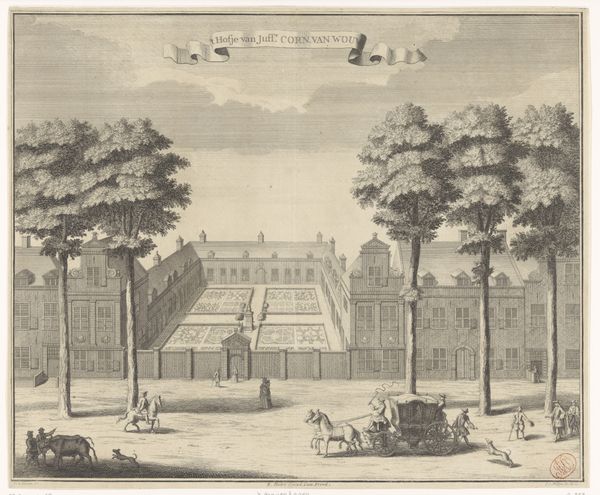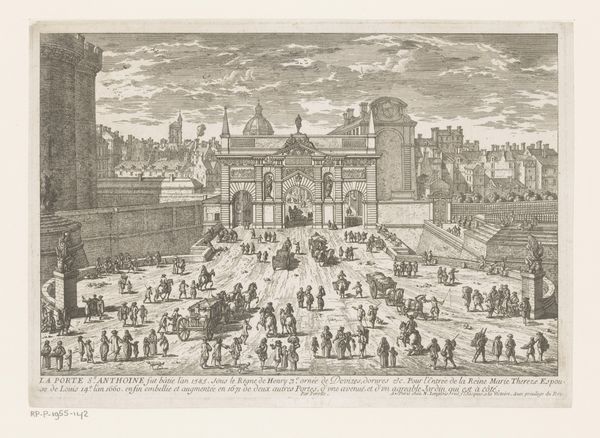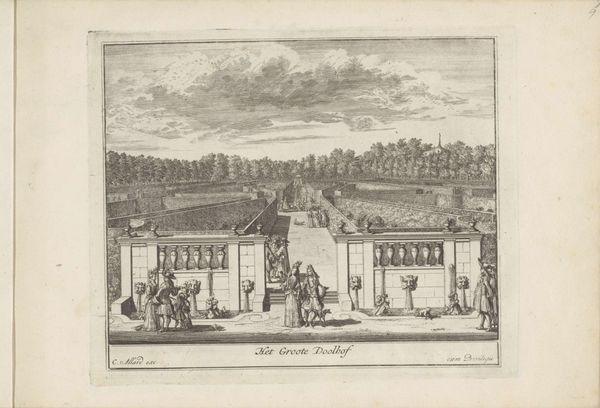
Teatro delle Acque in de tuinen van de Villa Aldobrandini te Frascati 1653 - 1691
0:00
0:00
giovannibattistafalda
Rijksmuseum
print, etching, engraving, architecture
#
baroque
# print
#
etching
#
landscape
#
cityscape
#
genre-painting
#
engraving
#
architecture
Dimensions: height 245 mm, width 398 mm
Copyright: Rijks Museum: Open Domain
Curator: The print we're looking at today is "Teatro delle Acque in de tuinen van de Villa Aldobrandini te Frascati," created between 1653 and 1691 by Giovanni Battista Falda. It's a captivating engraving that depicts the architectural grandeur of the Villa Aldobrandini gardens. Editor: Immediately, I'm struck by the ordered symmetry fighting against the unruly nature. It feels like a stage set, all dramatic lines and receding perspectives, softened just a bit by the teeming activity in the foreground. Curator: Precisely! Falda was documenting the designed landscapes that were markers of power in that period. Aristocrats used these gardens to project authority. The print shows how these spaces became sites for social performance and leisure, illustrating their role in shaping aristocratic identity. Editor: And those theatrical water features! Water is often a symbol of purification, rebirth and transformation. Here, combined with the formal structure, it elevates the spectacle to something almost religious, but still thoroughly grounded in worldly pleasures if we consider the joyful activities captured in the foreground. Curator: Absolutely. The gardens also reflect a conscious revival of classical ideals. These meticulously crafted spaces were more than recreational; they were loaded with cultural aspirations. This print is significant because it helped disseminate those aspirations, influencing garden design throughout Europe. It effectively 'published' the Aldobrandini's aesthetic. Editor: I'm especially drawn to how the engraver uses line to differentiate between the robust architecture, almost skeletal in its precision, and the softer organic shapes of the landscape. It reinforces that tension between order and nature that you pointed out. Also, notice how the crowd activity adds a playful dimension that speaks of more than formal display; it signifies human connection. Curator: Considering how Falda operated within a network of artists and patrons who actively promoted a vision of Roman grandeur, what resonates most is that prints like these not only recorded existing spaces but also helped shape social ambition and the collective cultural imagination. Editor: Yes, and it shows us the power of images to hold layers of symbolic weight – from pure aesthetic delight to reflections of social positioning. I feel a richer appreciation of how the print freezes a fleeting moment, preserving that garden’s symbolic importance for centuries.
Comments
No comments
Be the first to comment and join the conversation on the ultimate creative platform.
